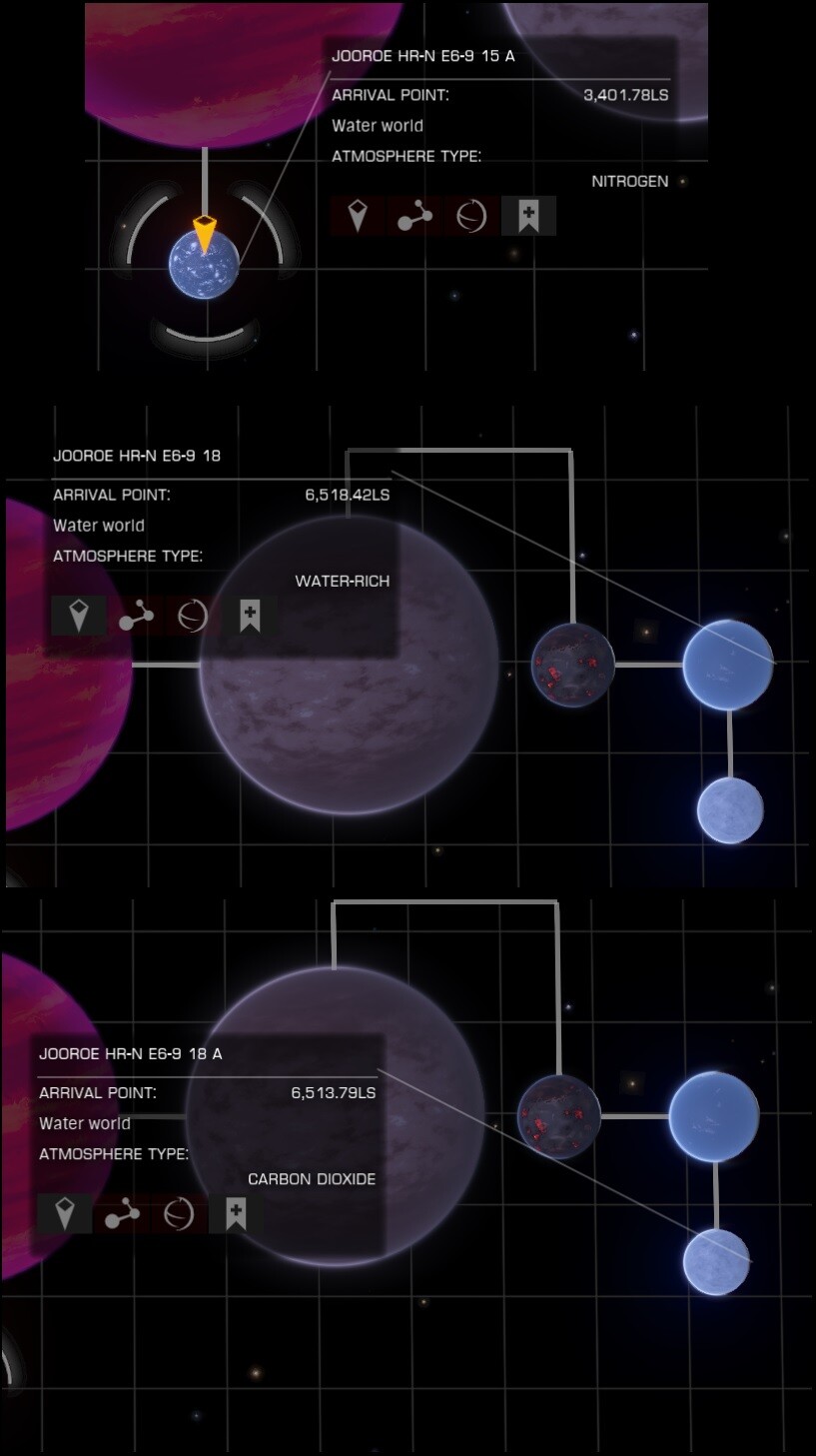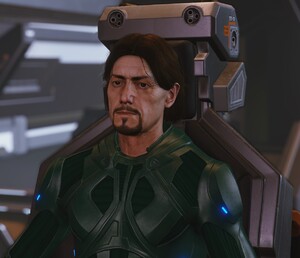Going Walkabout: Taking the Long Way Home
31 Oct 2020Seth Bradwell
Having reached the absolute edge of the galaxy, there was nothing to do but head back inside the embracing arms of those billions of stars. Some of you may have wondered why I didn't bother with any images of Beagle Point. In my opinion, it's been done several times before, and other than its position on the extreme edge of the galaxy it is not a particularly remarkable system, and several commanders have recorded the sights from that system. It is Oevsay SG-Y d0/Semotus Beacon which truly marks the end of the galaxy - at least for ships with the current jump technology, the materials needed for the required jump boost can be acquired for just an hour or two in a SRV and finally, the route to there from BP is straightforward for a ship with a decent base jump range, and therefore that became my real destination rather than its more famous counterpart. So slowly and steadily, I plotted a route to the Bubble.My first stop of prominence were the "Grand Rings" of Cheae Euq ER-L c21-0, known for a moon which has fantastic views of the ring system of the gas giant which it orbits, as well as some spectacular water geysers which sadly weren't as active as they have been when previous explorers have visited. However the ring system did not disappoint:
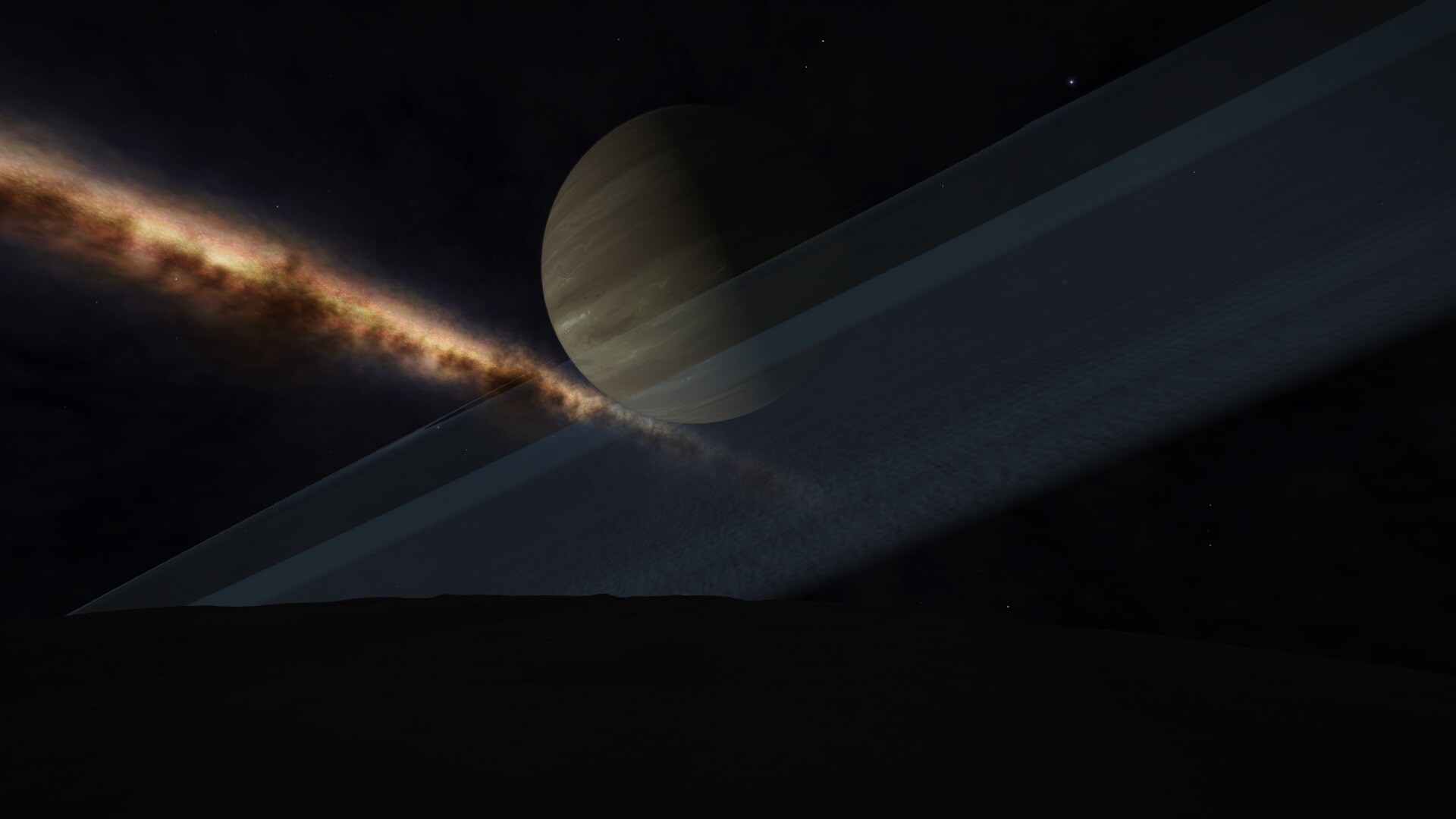
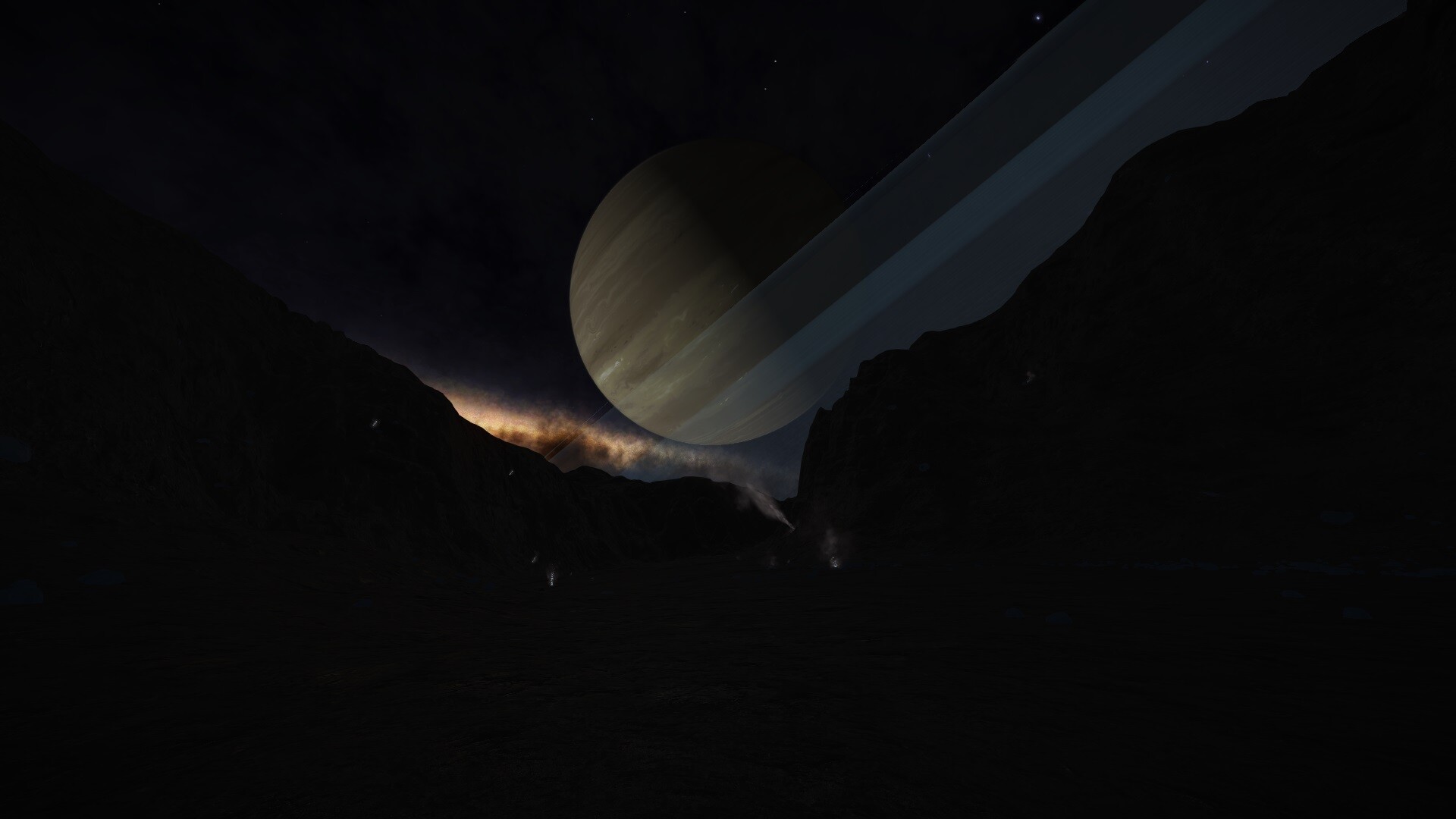
From there I rested on an ice moon in a system some 9,000 Ly from Semotus Beacon, and took this shot of the galaxy from the surface, complete with my landed ship for perspective:
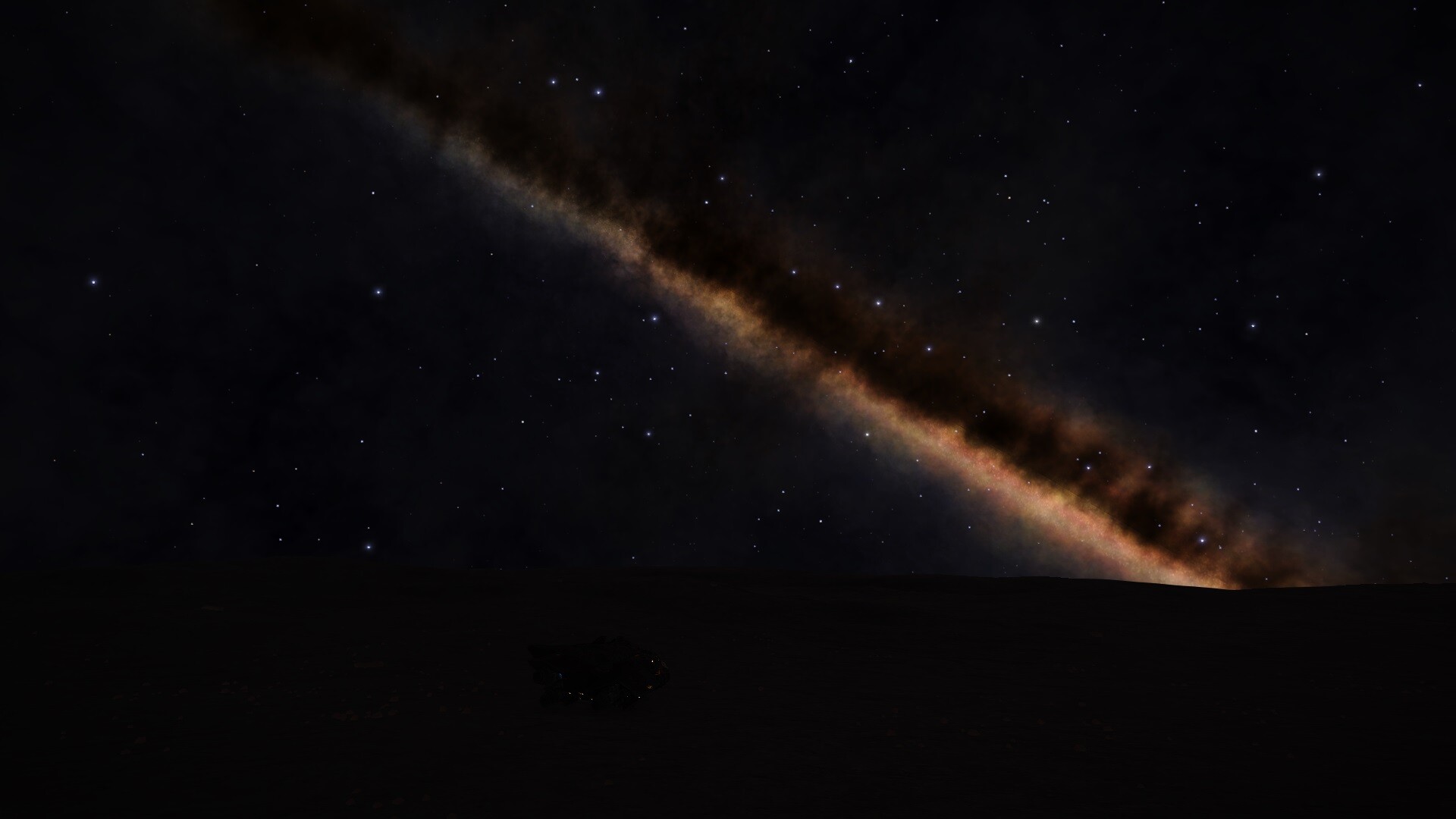
Another 10.7 Kly later I stopped to observe some volcanic activity on the innermost planet of Fachoae ZX-G b44-0 A:
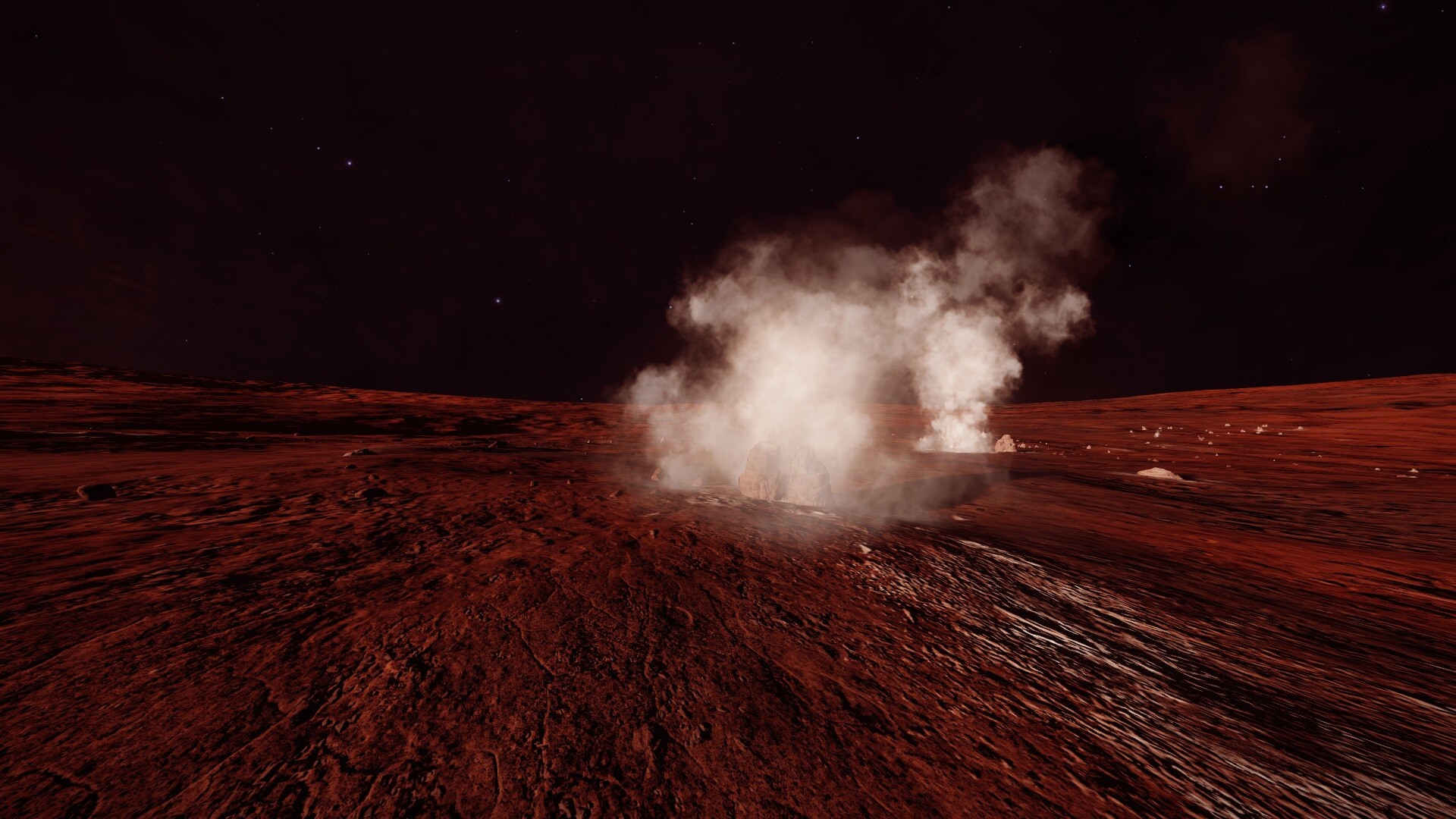
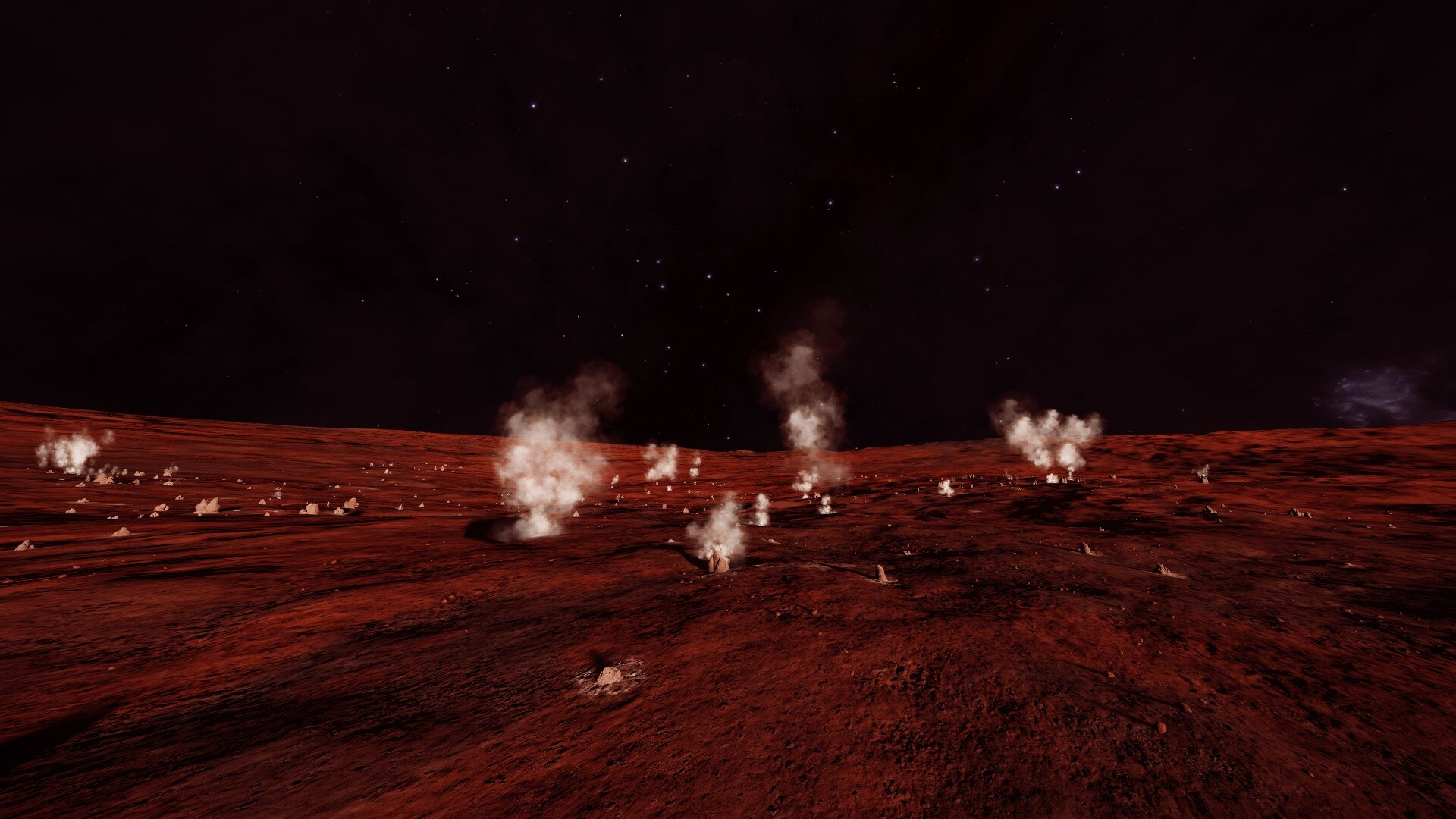
I then made my first first discovery of a terraformable world - Pyuefua QK-C d14-18 A 6. On my way to Semotus Beacon I had not really bothered looking at the systems I traversed en route other than to do a honk with the scanner and then move onto the next star, being more concerned with the journey in hand, and also not wanting to suffer further heartbreak if I made a hash out of attempting a neutron boost again. On the way back I decided to take things a bit easier.
Next stop is the tourist landmark the "Close Cousins" a gas giant (A 1) and a high metal content world (A 2) which orbit very close to each other, 3 and 6 light seconds from its star respectively. The high metal content world is landable, and has some impressive silicate vapour geysers, and it was possible to get a shot of them and the nearby gas giant - which almost looks like a view from a moon of its parent planet, not one planet from another:
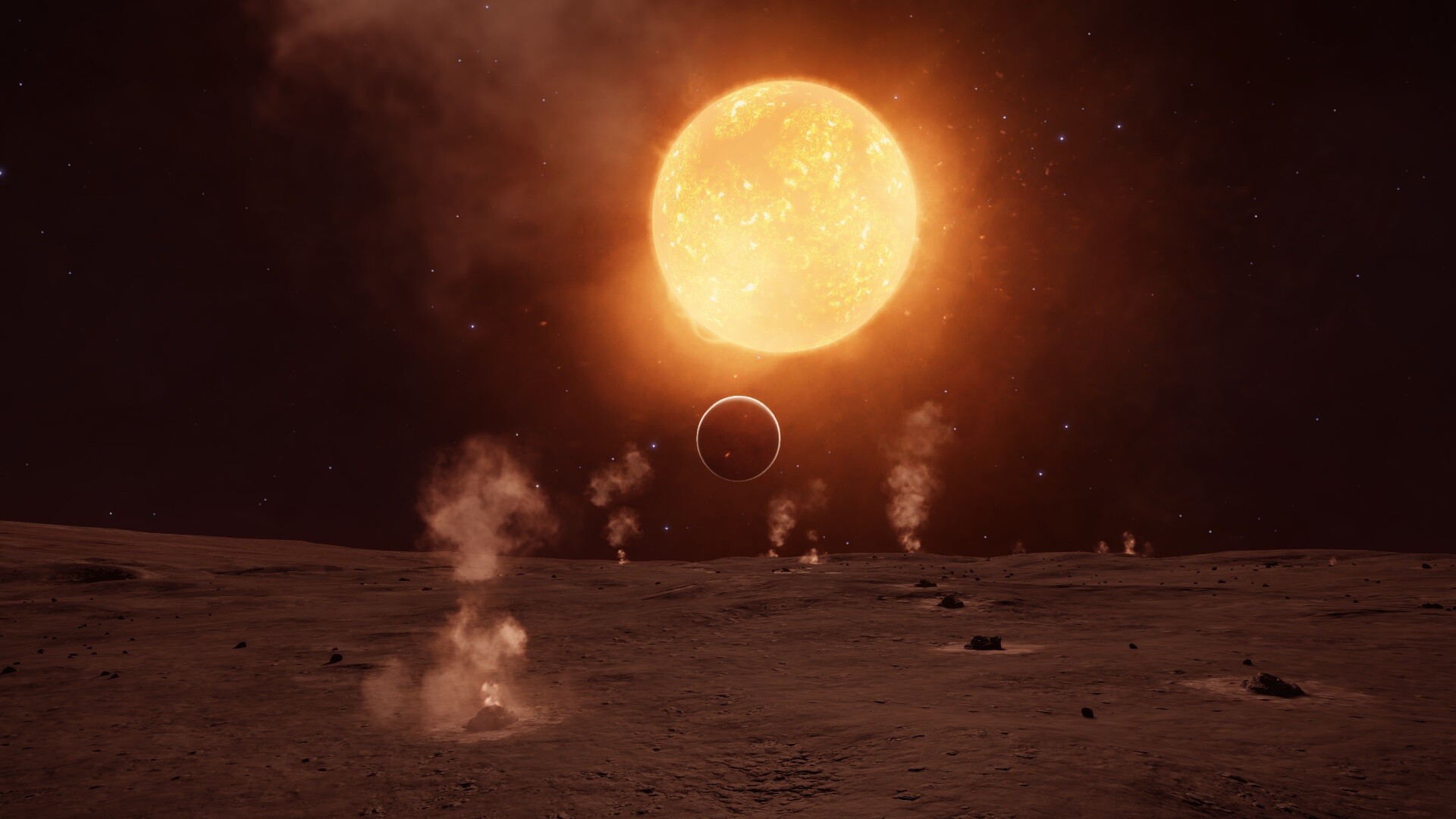
Pyuefua XO-P b39-1 A 2 also has an extremely hot surface for a landable planet - 869K, nearly six times the boiling point of water at Earth's sea level, and due to being so near the orbit of a gas giant, the tidal forces made for some fantastic volcanism. On the night side you could see the resultant "hellscape" from up close - a privilege since very few such planets are landable:

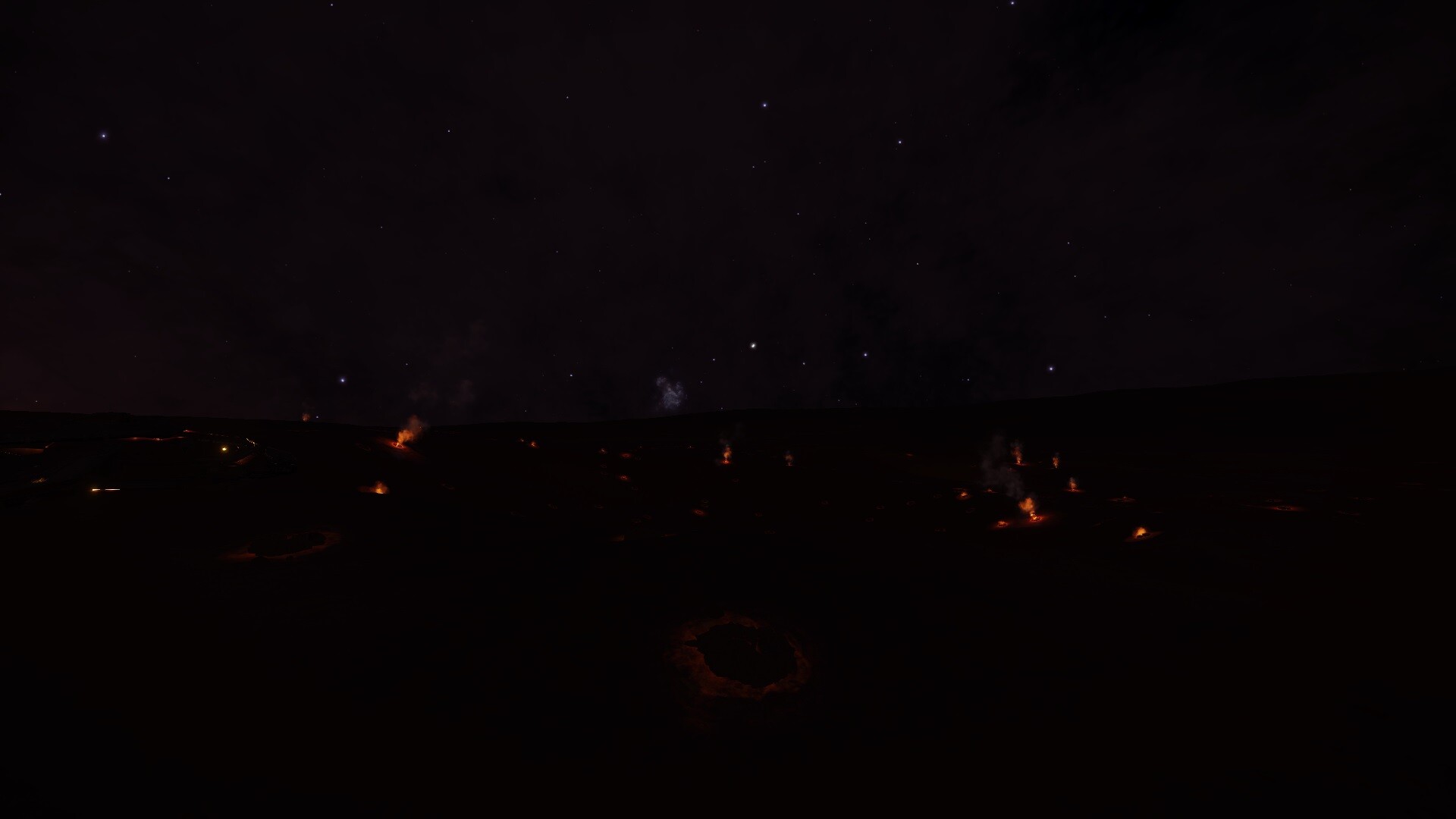
To conclude this instalment of the recording of my journey, I leave you with a picture of Jooroe HR-N e6-9 15 A, the first water world I had made a first discovery of:

There are actually three water worlds in this system, Jooroe HR-N e6-9 15 A (which is very unusual in itself in that it orbits a T Tauri star, and is potentially terraformable), alongside Jooroe HR-N e6-9 18 and its moon (although they are non-terraformable). An extremely rare arrangement of a relatively rare type of body - and I was the first to discover it:
